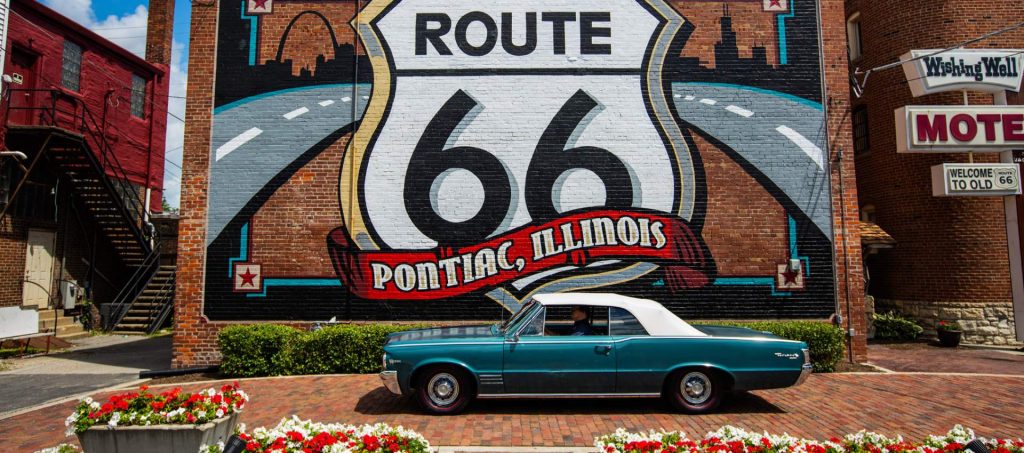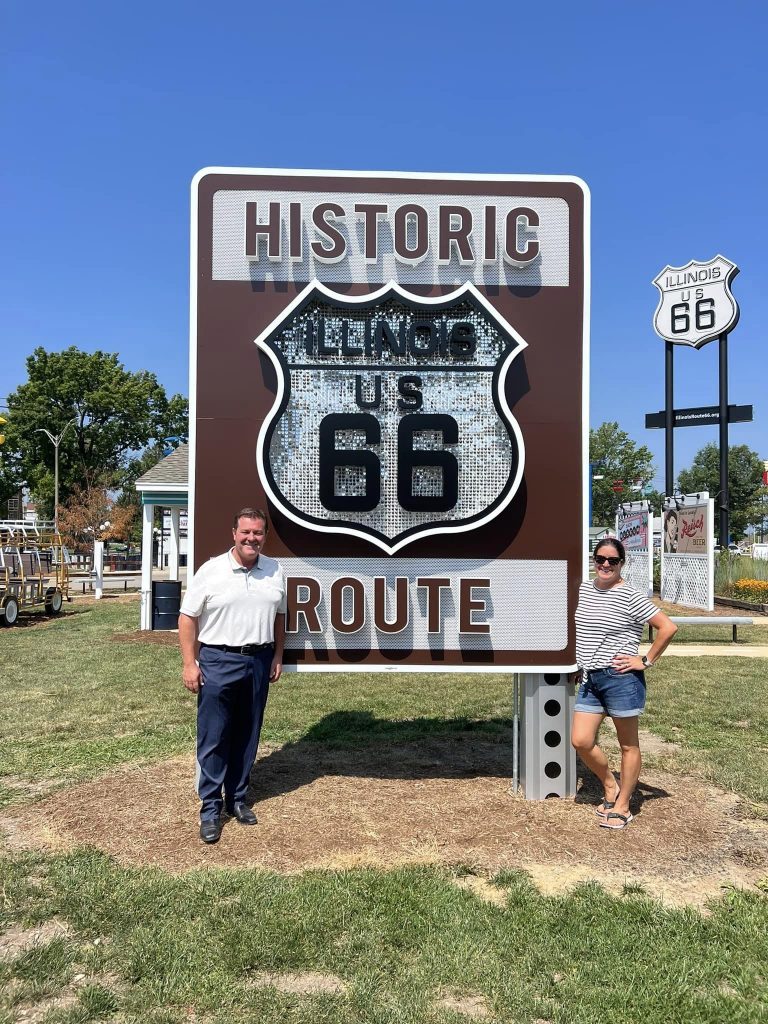Route 66 was an iconic highway that captured the imagination of the American traveler and made for the quintessential road trip. U.S. Highway 66 operated as a federal highway from 1926 until its decommissioning in 1985. In celebration of the historic highway’s 100th anniversary in 2026, the Illinois State Museum is collecting stories from individuals who experienced the Illinois leg of the original Route 66.

For nearly 60 years, Route 66 took travelers seamlessly through eight states and was touted as the shortest year-round route linking the Midwest to the Pacific Coast. It started in the big city of Chicago and threaded its ways through rural America, ultimately depositing travelers in Los Angeles. Small towns along the way boomed from tourism, farmers flourished because the roadway provided broader market opportunities for grain and produce and truckers had a direct and paved roadway, even during the winter months.
In John Steinbeck’s celebrated 1939 novel The Grapes of Wrath, Route 66 symbolizes escape, loss, and the hope of a new beginning for those living through the devastating dust bowl. He dubbed the highway the “Mother Road.” That moniker is still used today.

Not only was Route 66 immortalized in Steinbeck’s novel, it became a cultural phenomenon especially with the rise of the automobile after the Second World War. A 1946 roadtrip to California on the “Mother Road” inspired song writer Bobby Troup to pen the rhythm and blues tune “Route 66,” better known as “Get your kicks on Route 66.”

In Illinois, a new tourism industry evolved around Route 66 and gave rise to economic growth for many small rural communities. En route to the the southwest, travelers would leave the Chicago metropolitan area and take Route 66 through a number of Illinois cities and towns, including Joliet, Odell, Bloomington, Lincoln, Springfield, Edwardsville and East St. Louis. Motor lodges and roadside attractions sprung-up along the way catering to truckers and families alike. To this day roadside relics can still be found in Illinois communities, like the Paul Bunyon Hotdog Statue (Atlanta), World’s Largest Catsup Bottle (Collinsville) and The Railsplitter Covered Wagon (Lincoln).
Road trips and Route 66 are an integral part of Illinois history and culture. The Illinois State Museum is seeking to capture the Route 66 experience for future generations.
If you traveled the original Route 66 in Illinois or operated an Illinois business along the route during its hey day, or helped build the Illinois portion of the highway, the Illinois State Museum wants to hear your stories. Museum historians would like to interview:
- People who have memories of driving on Route 66 or traveling the highway with family or for business.
- Those who were involved or whose families were involved in operating restaurants, hotels, or auto service businesses along the route.
- Anyone who participated in the building, maintenance, or rerouting of the Mother Road.
- First responders who worked along Route 66.
- Those who have any other firsthand experiences with Route 66 to share.
The Museum is encouraging anyone who has experienced Route 66 in Illinois and would like to be part of the project to contact Route 66 project coordinator Judy Wagenblast.
Interview participants will be asked to sign a permission form granting legal rights to conduct and preserve the interview. Monetary compensation is not offered. Video recordings of the interviews and transcriptions will be made available to the public in an online database as part of the 100th anniversary celebration of Historic Route 66 in 2026.
Learn more about Route 66
